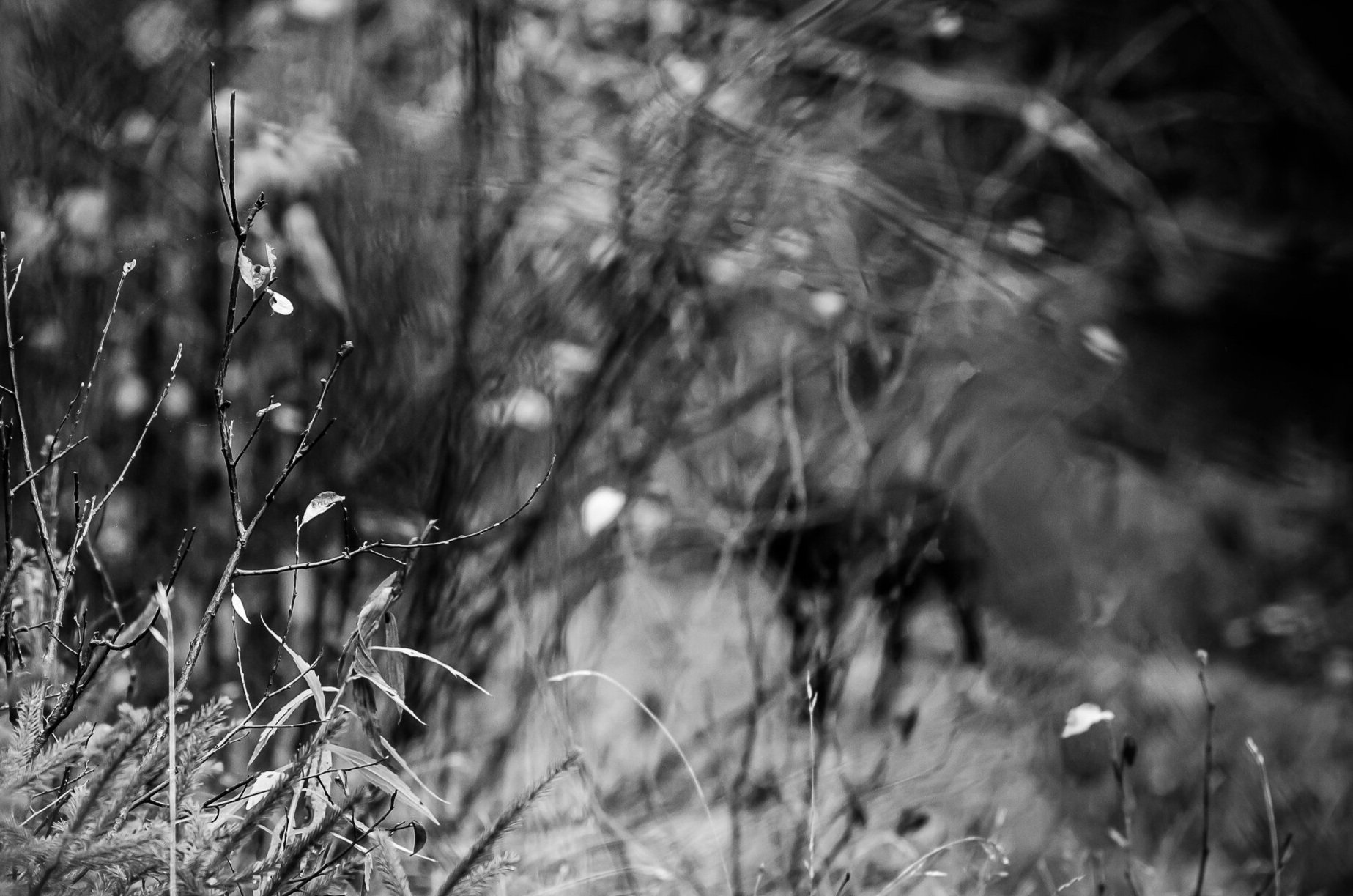The Last Lucivee, 2020.
Photo: Matt Brown
The Lucivee
The cougar once roamed the woodlands of Eastern North America, but today, industrial forestry practice has nearly destroyed any remaining viable cougar habitat. Now, the cougar exists only in our collective memory, except for the occasional (and much contested) sighting.
The word “lucivee” is an archaic French-Canadian term for large, wild cats, including cougars. Acadian in origin, the word was also adapted by Indigenous people and English settlers. The title Lucivee was chosen deliberately to link the species to the Wabanaki-Acadian forest bioregion.
This series, which includes photographs, a sculptural diorama and a short film, pays homage to the “Hunt of the Unicorn” tapestries: like the unicorn, the cougar is mythical, rare and elusive.
still from The Last Lucivee, 2021, digital film by Matt Brown and Janice Wright Cheney, music by Zachary Greer
still from The Last Lucivee, 2021, digital film by Matt Brown and Janice Wright Cheney, music by Zachary Greer
still from The Last Lucivee, 2021, digital film by Matt Brown and Janice Wright Cheney, music by Zachary Greer
The Naturalist’s Cabin. Installation at Third Shift, Saint John, 2022.
Photo: Amelia Bailey
The Naturalist’s Cabin, 2020. Set/installation.
Photo: Jeff Crawford
The Naturalist’s Cabin. Installation at Third Shift, Saint John, 2022
Photo: Amelia Bailey
The Lucivee in Captivity, 2020, detail.
Velvet, fur, taxidermy form, embroidery on velvet, India ink on cotton, digital print on linen
Photo: Jeff Crawford
Sighting the Lucivee: Beaufort, 2019, pigment print on cotton rag
50.8 x 76.2 cm
The Lucivee in Captivity, 2020, detail
Velvet, fur, taxidermy form, embroidery on velvet, India ink on cotton, digital print on linen
Photo: Jeff Crawford







